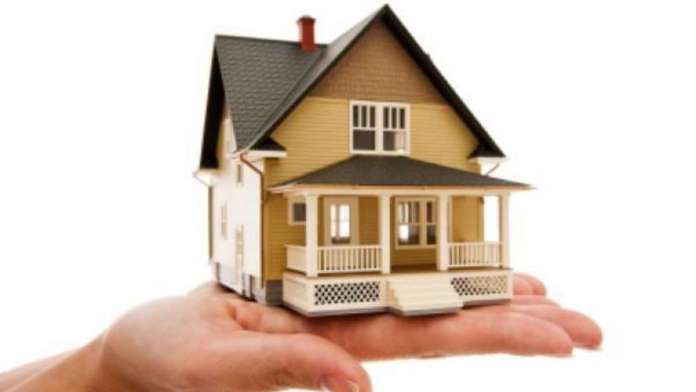If you have taken a loan to buy a house and are wondering how soon or late you must pay it back, provided your financial ability permits both options, there is more than the additional interest you will end up paying if you pay back late, which you must consider. Besides your Equated Monthly Instalment (EMIs), a mixture of the principal and a certain percentage of interest rate that the lender has levied while lending the loan amount, there is a prepayment option available on every home loan.
The choice of prepayment offers benefits in easing your EMI burden, and you must know the perfect time to make a prepayment of your home loan will enhance the benefit.
Making a prepayment is better in the early years of the tenure of a home loan rather than later, founder of Stable Investor Dev Ashish says. Here, you pay a certain portion of your loan amount earlier than the planned repayment period. While most borrowers tend to pre-pay their loan amount when they have surplus money, they may be oblivious of the fact that the loan principal gets paid off slowly during the initial years, making it better to make prepayments earlier in the tenure than later.
The early prepayment will lower your EMI burdens or shorten the loan tenure or reduce debt and also help in minimising interest rates. The founder of Stable Investor, a financial planning and investor advisory firm, tweeted that you will realise this soon if you take a home loan.
Dev explained in a thread of tweets that a big portion of your repayment in the first few years clears mostly the interest after you opt for long-tenure loans (like home loans). This is kind of ‘front-loading’ the interest. The adviser explained with an example of someone taking a Rs 50 lakh home loan at an interest rate of 8% for a period of 25 years. The EMI would be about Rs 38,591. In the entire tenure of 25 years, the total amount that the indebted person will end up paying a total interest of around Rs 65.8 lakh including interest.
In that, the first 5 years of regular EMI payments (each month without fail), which is 20% of the loan tenure of 25 years, only 7.7% of the loan is paid off. Now, there are a total of five 5-year periods of this 25-year loan (5 years X 25 years), Dev explained. In the next five years (6-10 years), he said that only 19.2% of the total loan amount is repaid. This would be a rise of 11.5% in the loan paid off from the first set of five years to the second.
This implies that by the end of 15 years (the third set of five years which is 11-15 years), about 36.4% of the loan is paid off, which is a rise of 17.2% from the second set. However, there is a bog leap of 25.5% from the third set, as by the end of 20 years (fourth set of five years which is 16-20 years) around 61.9% of the loan is paid off.
As compared to the fourth term (16-20 years), there is an increase of 38.1% as in the fifth and the last set of tenures (21-25 years) when 100% of the loan amount is paid off. Dev explained thus that the earlier you make the prepayments, the better it is for you in terms of its impact on reducing the total interest paid during the loan tenure.
To that, Chief Customer Officer and Head of Operations at Godrej Capital Nalin Jain said that a home loan was a long-term financial commitment, with the interest component often exceeding the principal amount because of the long tenures of a typical home loan of 20 to 30 years. He said it was best to go for the home loan prepayment option during the initial tenure of the loan when the interest component is high, as prepayment at a later stage may not help maximise the benefit of being debt-free early.
Jairam Sridharan, the MD of Piramal Capital & Housing Finance, agrees. He highlighted that prepayment of home loans in the initial part of the loan tenure is always better, helping reduce the EMI or pay a much lower interest amount on the reduced principal outstanding after prepayment. If a borrower happens to receive a chunk in the later part of the tenure, it may be a good idea to invest it somewhere else and repay the home loan in the normal tenure. The borrower may also seek the lender’s help to choose the best EMI option.
Home loan more expensive now
Home loan interest rates have risen substantially since the Reserve Bank of India‘s (RBI) rate hike cycle began in May this year to check the persistently high inflation. So far this fiscal, the central bank has hiked the repo rate by 225 basis points to 6.25%. The latest hike would be 35 basis points in December 2022 policy.
After the hike, founder of hBits Shiv Parekh said, “The commercial real estate growth is pulling lots of investment, it has been stable through all ups and downs. Even the current repo rate hike will not affect much on commercial real estate much, as the current increase is in line with RBI’s mission to take on inflation, a mission in which it has been failing.
As there has been a moderate hike in the home loan too, the affordability of the home loan is still fine from a residential perspective. We expect that the positive sentiment will remain in the CRE sector. When it comes to fractional ownership, it is one of the best investments at this time which gives steady and stable returns.”
Parekh said, however, “the real estate industry expects a reduction in the key rates going forward, which will be widely celebrated, as lowering interest rates has been a crucial factor in the revival of the demand in overall real estate. It will help in improving the liquidity situation which is vital for the sector.”
Voicing a common concern in the middle-income group, Chairman and MD of Sterling Developers Ramani Sastri said that the continuous rate hikes might lead to short-term turbulence in the overall housing demand when buyers are optimistic about buying a house, which may add to the buyer’s overall acquisition cost. The real estate sector had started seeing gradual recovery across key property markets, driven primarily by end-users, but the repeated rate hikes impacted the interest rate-sensitive sector.
Low-interest rates have been the greatest factor in the resurgence of real estate demand in the last few years and hence the rate hike would mean a hurdle in affordability. However, Sastri qualified it by saying that there was a positive sentiment, as the affordability and disposable incomes of new-age homebuyers were much better than in the past.
Despite the negatives, market observers are hopeful as there is significant pent-up demand from a very large population base and first-time home buyers. Real estate is certainly among the best instruments to invest in. Markets will see sustained growth over the next few years, the Sterling Developers chief believes.




You must log in to post a comment.